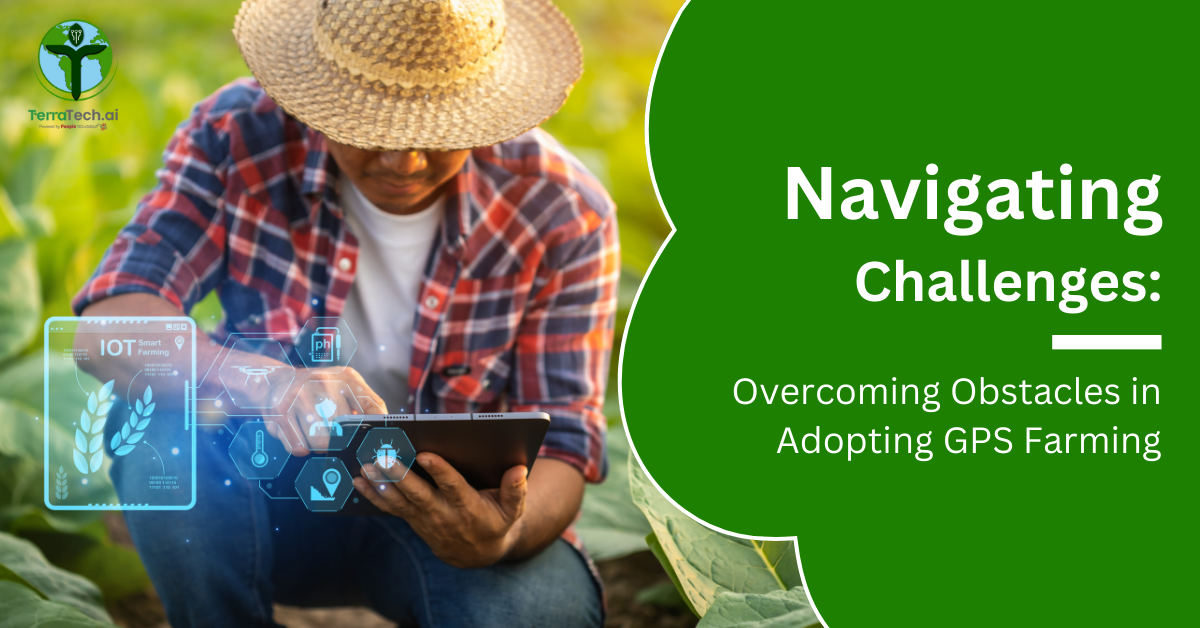Navigating Challenges: Overcoming Obstacles in Adopting GPS Farming
GPS in farming has surfaced as a transformative and revolutionary influence in contemporary agriculture, where the paramount focus lies on precision and efficiency. As the global population burgeons and arable land become scarcer, the adoption of GPS in agriculture promises to maximize yield while minimizing waste. However, this promising horizon has its fair share of challenges. The transition from traditional agricultural practices to GPS-powered farming methods necessitates a nuanced understanding of farmers’ obstacles.
Understanding GPS Technology
Global Positioning System is a satellite-based navigation system that transmits signals from a satellite constellation to GPS receivers on Earth. This technology has revolutionized navigation, enabling applications ranging from vehicle tracking to geolocation services on smartphones. In the agricultural context, GPS has been harnessed to enhance various aspects of farming to optimize the use of resources and increase overall efficiency.
The adoption of GPS in farming brings forth a multitude of benefits:
- Precision Agriculture: GPS-guided equipment offers pinpoint accuracy, allowing farmers to determine their position within fields precisely. This level of precision facilitates the targeted application of fertilizers, pesticides, and irrigation, thereby minimizing resource wastage and improving crop yields.
- Reduced Resource Wastage: By enabling the precise application of inputs, GPS in agriculture minimizes the overuse of resources such as water, fertilizers, and chemicals. This reduces operational costs and contributes to environmental sustainability by minimizing the impact of excess application.
- Data-Driven Decision-Making: GPS generates a wealth of data about soil conditions, plant health, and yield variability across fields. This data-driven farming helps make informed decisions, optimize planting patterns, and adjust cultivation strategies for better results.
Challenges & Strategies to Overcome Challenges in Adopting GPS Farming
- Technological Barriers: The integration of GPS technology into farming operations demands a level of technological literacy that might pose challenges for some farmers. This includes understanding how to operate GPS-guided equipment, interpreting data, and troubleshooting technical issues. Let’s understand how to overcome this challenge.
a) User-Friendly GPS Equipment & Interfaces: One of the main challenges in adopting GPS in farming is the complexity of the technology. To address this, manufacturers increasingly focus on creating user-friendly GPS equipment and intuitive interfaces. GPS-fitted receivers now have simplified interfaces that make navigation and data collection easier.
b) Technical Support & Assistance for Integration: Integrating GPS technology into existing farming operations can be daunting. To overcome this challenge, agricultural technology providers offer technical support and assistance during the implementation phase. This may include on-site training, troubleshooting guides, and dedicated consumer support.
- Financial Considerations: The initial investment required for adopting GPS technology can be substantial, encompassing the purchase of GPS-enabled equipment, software licenses, and ongoing maintenance costs. For small-scale farmers, these financial considerations can act as a significant barrier. Let’s understand how to overcome this challenge.
a) Exploring Financial Options: One of the primary concerns is the initial cost. Farmers must explore various financial options to mitigate this challenge, like leasing equipment, taking advantage of grants or subsidies, or seeking financing tailored to agricultural technology adoption.
b) Calculating Long-Term Benefits & Potential Cost-Savings: While the upfront investment may seem significant, it’s crucial to consider the long-term benefits and potential cost-savings. Improved accuracy leads to reduced input costs and increased yields. A thorough cost-benefit analysis can help farmers gain an understanding of the ROI.
- Data Management: GPS generates vast amounts of data, including yield maps, soil quality assessments, and weather patterns. Efficiently managing, analyzing, and utilizing this data can be overwhelming for farmers, particularly those lacking experience in data management techniques. Let’s understand how to overcome this challenge.
a) User-Friendly Software for Data Analysis: The abundance of data generated can be overwhelming. However, user-friendly software platforms can help interpret and analyze the data collected. These platforms provide visualizations, insights, and recommendations that enable farmers to make informed decisions.
b) Implementing Data Quality Control Measures: Implementing data quality control measures ensures accurate information used for decision-making. This reliability contributes to the effectiveness of GPS-based practices.
- Training & Education: Implementing GPS farming requires a fundamental shift in farming practices. Farmers need proper training to optimize the use of GPS-enabled equipment and understand the benefits this technology can bring to their operations. Let’s understand how to overcome this challenge.
a) Overcoming the learning curve associated with GPS requires training and programs provided by agricultural extension services, technology providers, and industry associations. Furthermore, showing real-world examples of increased efficiency, reduced environmental impact, and improved yields can inspire confidence.
The agricultural community stands at a crossroads where embracing innovation is not just a choice but a necessity. As we understand how we can help farmers overcome obstacles of GPS in farming, let’s forge ahead toward a future where GPS-powered fields flourish and global nourishment blooms.

